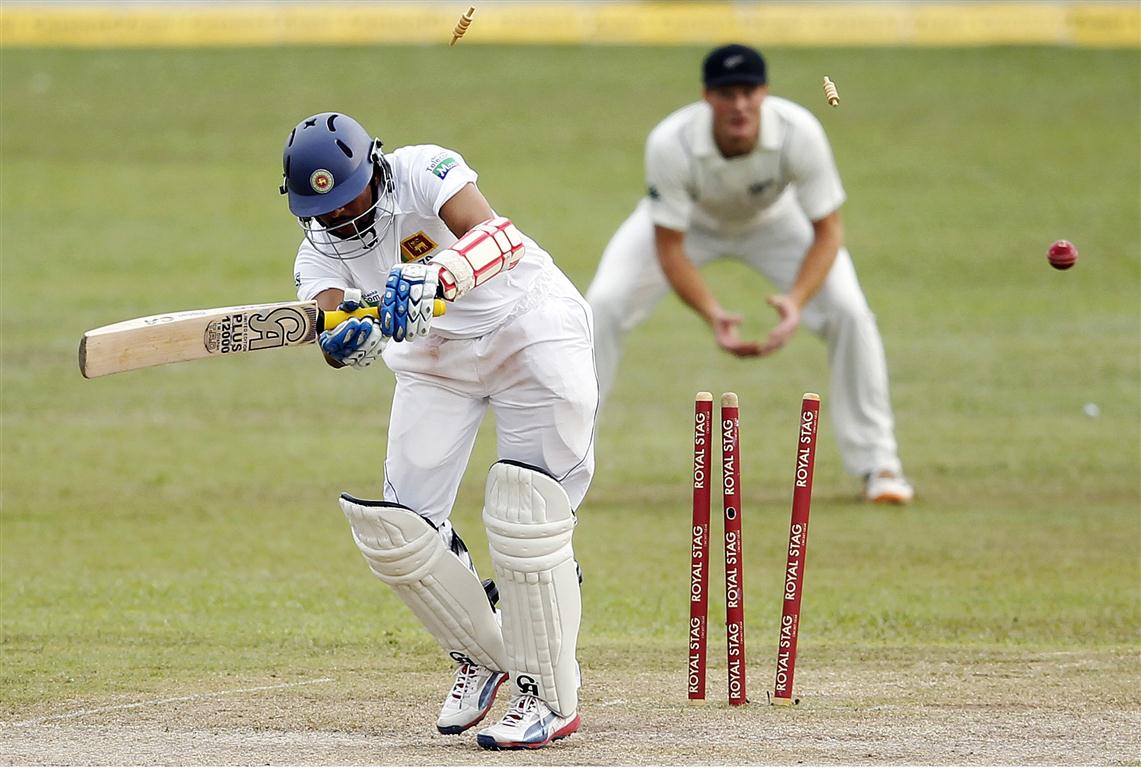The Revolution of Test Cricket?
Test Cricket is undergoing a revolution at the moment – of sorts. The future of Test cricket is constantly being talked about, as well as the changes which are needed to ‘save’ the format. In this blog I want to take a look at two areas which have received a lot of press of late – the proposed two-tier Test structure and the introduction of day-night Test cricket.
Two-tier Test Structure
Last week ICC Chief Executive David Richardson made a number of announcements unveiling the ICC’s plans for the next number of years. The most significant of those plans or proposals was that of a new two-tier or two-division Test structure. The plan looks to reduce the number of one-sided or near uncontested series, improving the overall standard of the cricket played while looking to increase the number of teams playing the most elite format of the game. While the ICC have previously taken steps to almost push the Associates into the dark (reducing the number of teams in the World Cup; moving the World T20 to a 4-yearly tournament), the new announcements look to reverse the trend somewhat.

A two-tier Test structure would likely see a 7-5 team split. Based on the current rankings, the top tier would consist of Australia, India, Pakistan, England, New Zealand, South Africa and Sri Lanka. What stands out about this immediately is that storied rivalries and series such as the Ashes, India-Pakistan and the Trans-Tasman would continue to exist (at least they would for now). The second tier would therefore be made up of West Indies, Bangladesh, Zimbabwe and two Associate nations. Issues do exist around Zimbabwe at the moment, having not even played enough matches to be ranked in the longest format of the game. Their board seem completely unwilling to promote the longer format of the game (or pay their players), driving a number of players away, including their former captain and one of their best ever players in Brendan Taylor.
Generally speaking, the two-tier system has been well received. However, with every proposed change, criticisms and problems will exist. Financially, playing second division cricket would be problematic for the likes of West Indies, who rely on series against the larger nations in order to make a profit. There are also questions as to whether players would be driven away from Test cricket if they are demoted to second division cricket. For the likes of Bangladesh and the Associate nations, I don’t think this would pose a problem at all. For Zimbabwe, well it’s near impossible to know where Zimbabwean cricket will be in 12 months’ time. The real problems lie with West Indies, who are already struggling to retain their best players in the Test arena.
More specifically, the new proposals have drawn criticism from the likes of Dwayne Bravo and Mark Wood. While Bravo believes that the short format is the only way forward, with youngster recognising the more lucrative benefits as well as the lesser time commitments. Wood’s point-of-view is a little bit different. His problem with the new proposal is that it will prevent players from facing every Test playing nation. This isn’t entirely true however, as the relegation and promotion system would ensure that the divisions don’t stay stagnant. But do we really want to see every country facing each-other? What if this just results in one-sided series like we’ve seen between Sri Lanka and England over the last two weeks? I personally don’t believe that Sri Lanka in their current state match up to the top teams (at the time of writing, they are giving England a little bit of trouble in Lord’s – of course). I’m more interested in seeing Test series between England, South Africa, Australia, Pakistan, New Zealand and India.
While I am biased of course, I’m also hugely in favour of growing the game internationally. The Associate game rarely has its chance to shine, largely relying on the major ICC tournaments to get any TV time. The Intercontinental Cup has allowed a lane-way to Test cricket for one country, but that’s all it is. A laneway. It’s narrow and dark and we really don’t know what lies at the end of it. In 2016, that simply isn’t good enough anymore. A two-tiered Test structure which includes Associates? Yes please!
Day-Night Tests
No matter what, no matter how good it is for the game, people will always be critical of any changes to the game. That said, any cricket follower will know that one of the more unique aspects of cricket is that it is always in a state of flux. Rules and regulations seem to change every few months, tests are carried out on DRS and equipment rules are introduced on the regular; sure even the weather can change the landscape of a game in minutes. What about day-night cricket? The shorter-format of the game relies on day-night matches. People can tune in or attend matches after work or school, meaning larger crowds at the matches and more people tuning in. Day-night cricket has now been trialled in Test cricket. Yes, the most traditional elite format of the game is experiencing some very big changes.
After the inaugural day-night Test in Adelaide, both captains praised the success of the match, while the media were very much on board. Financially the benefits are clear – more people at the matches, more eyes on the screen. Brendon McCullum stated that day-night cricket was ‘here to stay’, and the recent announcement of a day-night Test between Australia and South Africa solidifies that. The second day-night Test match will be held in November of this year in Adelaide once again. While I’ll happily watch any match between Australia and South Africa, this is definitely one that I will be more interested in. While Cricket Australia are keen to boast the profile of the game in such a manner, will day-night cricket become the norm? In the ideal world, day-night Tests will become a part of every series, even if just for one match. Such a Test will always receive added attention and scrutiny simply because change is scary. This all makes sense. This extra attention only adds to the intrigue and excitement around the game. While neither Alastair Cook nor Steven Smith believe a day-night Test will feature in Ashes cricket any time soon, Cricket Australia are keen to make the change.

Again, with every problem, critics will pop up and proclaim that this change is the worst thing to happen in cricket since Sourav Ganguly stood topless on the Lord’s balcony – a travesty indeed. The problems associated with day-night Tests surround the quality of the ball and how well it holds up. Again, this is an on-going process. While the ball isn’t exactly the same as the traditional red ball, it still held up pretty well in the Australia – New-Zealand match. The only way to solve this is to keep looking to improve the balls, to play matches and to line them up beside red-ball tests. Changes will exists, but how significant are they? If the ball is falling apart after 30 overs it’s clearly as issue. If such changes aren’t happening until over 60-70, well the issue isn’t quite as extreme. Dare I suggest that the ball could be changed earlier? No of course not! The other significant problem related to conditions, how the ball behaves and how the conditions change as the match progresses. In some respects, this is something which is out of our hands. If we wake up to cloudy skies on day one of a Test match which sees James Anderson swing the ball around corners, there isn’t much we can do. Players will, with time, become better and better at reading the conditions. It will become more difficult to bat later in the day, naturally. That will be something for players to hone their skills to different periods in the day, and it will also see captains needing to make tactical decisions regarding declarations, which bowlers to bowl at what times and so on. So what do I say to day-night cricket? Bring it on! The more, the merrier. It’s impossible to make everything perfect, but we can slowly but surely work towards it. Cricket Australia is leading the charge, and hopefully with time they can drag the old-boys to the front of the queue.
The simple fact of the matter is that Test cricket needs to change to survive. Test cricket in its current state can’t compete with the faster T20 format. For fans, T20 cricket makes more sense – it’s easy to sit and commit a few hours too, it’s all over TV and doesn’t cost an arm or leg and people can tune in after work or school. For players, T20 cricket boasts lucrative opportunities that Test cricket can’t. With the exception of England, Australia and India, Test cricketers aren’t very highly paid. The clearest example of this is the demise of West Indian cricket, with players preferring domestic T20 tournaments such as the IPL, the Big Bash, BPL and even the Blast to international series.
While a two-tier system and day-night Tests won’t solve every problem, it will help to finally move the game into the 21st century. If there are any lessons that can be learnt from the more popular T20 format – the game needs to and can grow with the inclusion of more teams. The elite-boys club of the past doesn’t really work anymore.
*I’ll get another blog up tomorrow about the ‘other problems’ which exist in modern Test cricket, including pitch standards, DRS, the toss, tour preparations and the length of matches.





